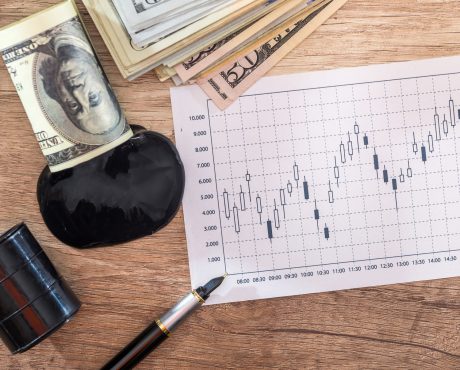Why Investors Should Consider DM Stock
For the most part, Dominion Energy Midstream Partners LP (NYSE:DM) wasn’t really known as a high-yield stock. If you bought DM stock last year, chances are you locked in a yield of between four and five percent.
But now, things have changed. Due to the massive downturn in the unit price of Dominion Energy Midstream Partners, DM stock’s yield has surged to 7.8%.
The big question, of course, is whether this beaten-down yield is actually worth considering. Quite often, stocks are down for a good reason. In some cases, the reason behind a high dividend yield is the lack in dividend safety. As risk-averse income investors, you wouldn’t want to get into a stock before its dividend is cut.
Fortunately, based on Dominion Energy Midstream Partners’ financials, its distribution policy actually looks safe. Let me explain.
Headquartered in Richmond, Virginia, Dominion Midstream Partners was created by power and energy company Dominion Energy Inc (NYSE:D) to own, operate, and expand a portfolio of natural gas terminaling, processing, storage, and transportation assets.
Most recently, DM stock hasn’t been a hot commodity. The reason is simple: On Thursday, March 15, the Federal Energy Regulatory Commission (FERC) announced that it would no longer allow certain energy pipeline operators to recover an income tax allowance in cost of service rates. (Source: “FERC revises Policies, Will Disallow Income Tax Allowance Cost Recovery in MLP Pipeline Rates,” Federal Energy Regulatory Commission, March 15, 2018.)
The stock market interpreted this as major bad news for midstream partnerships. Since the FERC put out the press release, the Alerian MLP Index, an index that tracks 40 master limited partnerships trading on U.S. stock exchanges, fell more than eight percent. Dominion Energy Midstream Partners was hit particularly hard, plunging more than 35% since the announcement.
However, the situation at this energy partnership may not be as bad as its unit price seems to suggest. The parent company, Dominion Energy Inc, made a statement saying that the FERC’s policy change, “will take years to implement and, even then, will only impact revenues on a prospective basis from the conclusion of any ratemaking process.”
Furthermore, the company “does not anticipate any revenue reductions in the 2018 to 2020 time period due to FERC’s actions” for Dominion Energy Midstream Partners. (Source: “Dominion Energy Affirms Earnings Guidance, Credit Objectives,” Dominion Energy Inc, March 19, 2018.)
If that’s the case and business doesn’t deteriorate for Dominion Energy Midstream Partners, then income investors don’t really have much to worry about in the short term. In fact, according to the partnership’s latest investor presentation, management is pursuing a plan of delivering 22% annual distribution growth through 2020. (Source: “Fourth Quarter 2017 Earnings Call,” Dominion Energy Midstream Partners LP, last accessed March 26, 2018.)
Just take a look at DM stock’s distribution history and you’ll see what I mean. When the partnership was formed, it had a minimum quarterly distribution rate of $0.175 per unit. Its first payment of $0.1389 per unit, made in February 2015, was a prorated distribution based on that amount.
But since then, Dominion Energy Midstream Partners has raised its payout every single quarter. With its quarterly distribution rate currently standing at $0.3180 per unit, DM stock’s payout has grown by 81.7% from its minimum requirement. (Source: “Distribution History,” Dominion Energy Midstream Partners LP, last accessed March 26, 2018.)
The payout is also safe. In the fourth quarter of 2017, Dominion Energy Midstream Partners generated $47.6 million in distributable cash flow. Given its total distributions of $39.1 million for the quarter, the partnership achieved a payout ratio of 1.22 times. (Source: “Dominion Energy Midstream Partners Announces Fourth-Quarter and Full-Year 2017 Earnings,” Dominion Energy Midstream Partners LP, January 29, 2018.)
In full-year 2017, Dominion Energy Midstream Partners’ distributable cash flow came in at $178.2 million, while it paid $137.8 million in cash distributions. That translated to a payout ratio of 1.29 times, also leaving a sizable margin of safety.
As it stands, this beaten-down stock’s 7.8% yield could be an opportunity.
